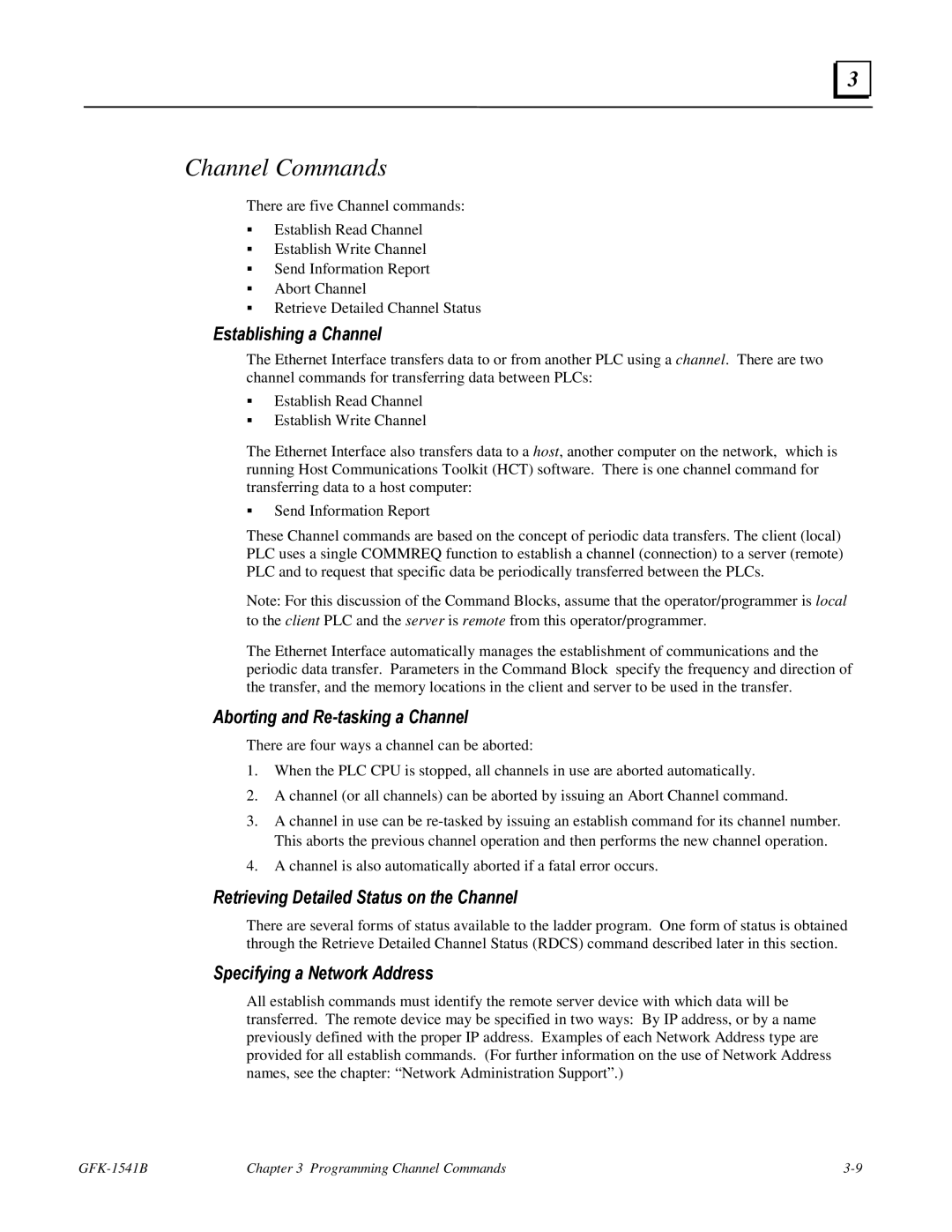3 |
Channel Commands
There are five Channel commands:
Establish Read Channel
Establish Write Channel
Send Information Report
Abort Channel
Retrieve Detailed Channel Status
Establishing a Channel
The Ethernet Interface transfers data to or from another PLC using a channel. There are two channel commands for transferring data between PLCs:
Establish Read Channel
Establish Write Channel
The Ethernet Interface also transfers data to a host, another computer on the network, which is running Host Communications Toolkit (HCT) software. There is one channel command for transferring data to a host computer:
Send Information Report
These Channel commands are based on the concept of periodic data transfers. The client (local) PLC uses a single COMMREQ function to establish a channel (connection) to a server (remote) PLC and to request that specific data be periodically transferred between the PLCs.
Note: For this discussion of the Command Blocks, assume that the operator/programmer is local to the client PLC and the server is remote from this operator/programmer.
The Ethernet Interface automatically manages the establishment of communications and the periodic data transfer. Parameters in the Command Block specify the frequency and direction of the transfer, and the memory locations in the client and server to be used in the transfer.
Aborting and Re-tasking a Channel
There are four ways a channel can be aborted:
1.When the PLC CPU is stopped, all channels in use are aborted automatically.
2.A channel (or all channels) can be aborted by issuing an Abort Channel command.
3.A channel in use can be
4.A channel is also automatically aborted if a fatal error occurs.
Retrieving Detailed Status on the Channel
There are several forms of status available to the ladder program. One form of status is obtained through the Retrieve Detailed Channel Status (RDCS) command described later in this section.
Specifying a Network Address
All establish commands must identify the remote server device with which data will be transferred. The remote device may be specified in two ways: By IP address, or by a name previously defined with the proper IP address. Examples of each Network Address type are provided for all establish commands. (For further information on the use of Network Address names, see the chapter: “Network Administration Support”.)
Chapter 3 Programming Channel Commands |
